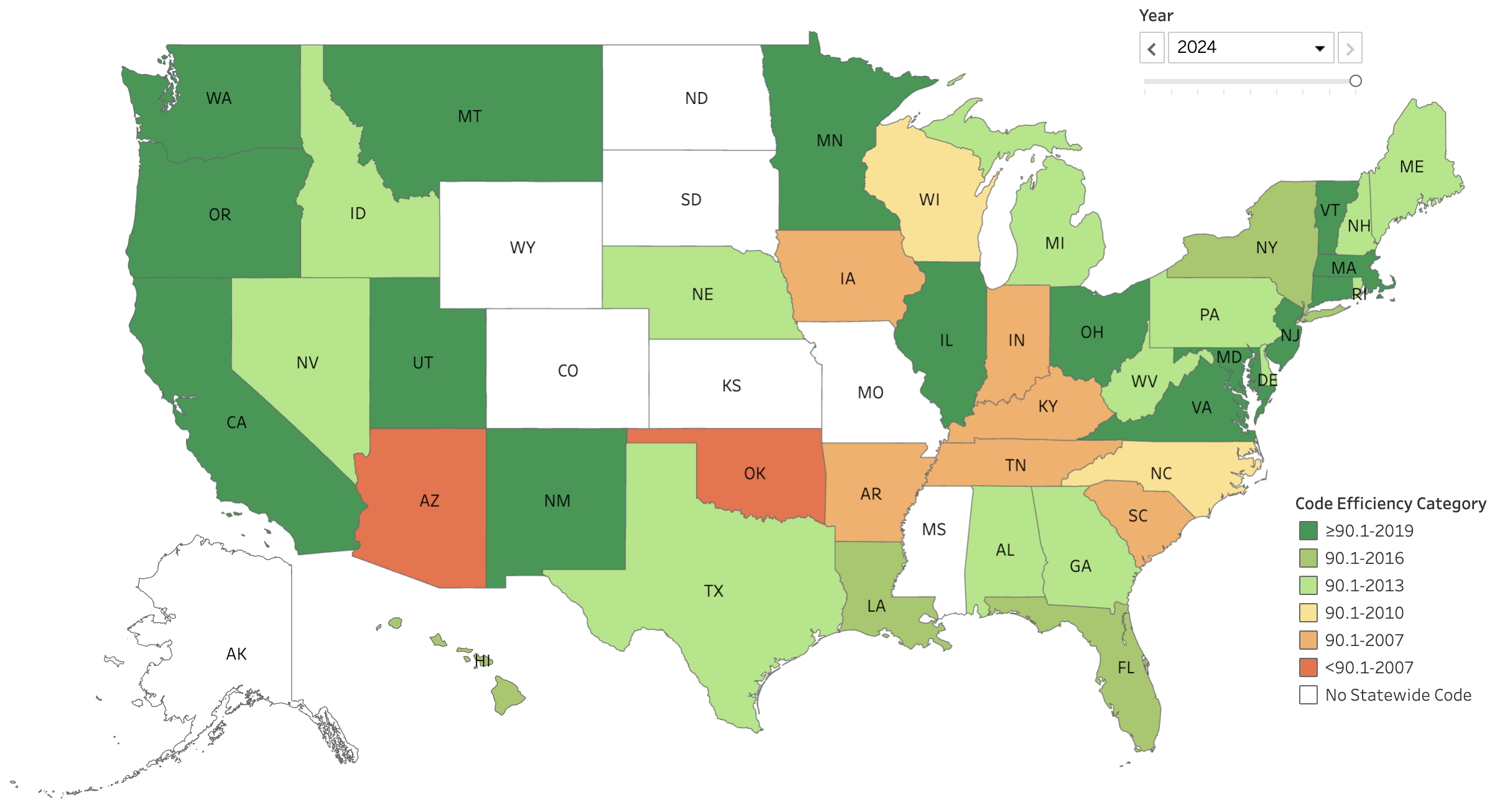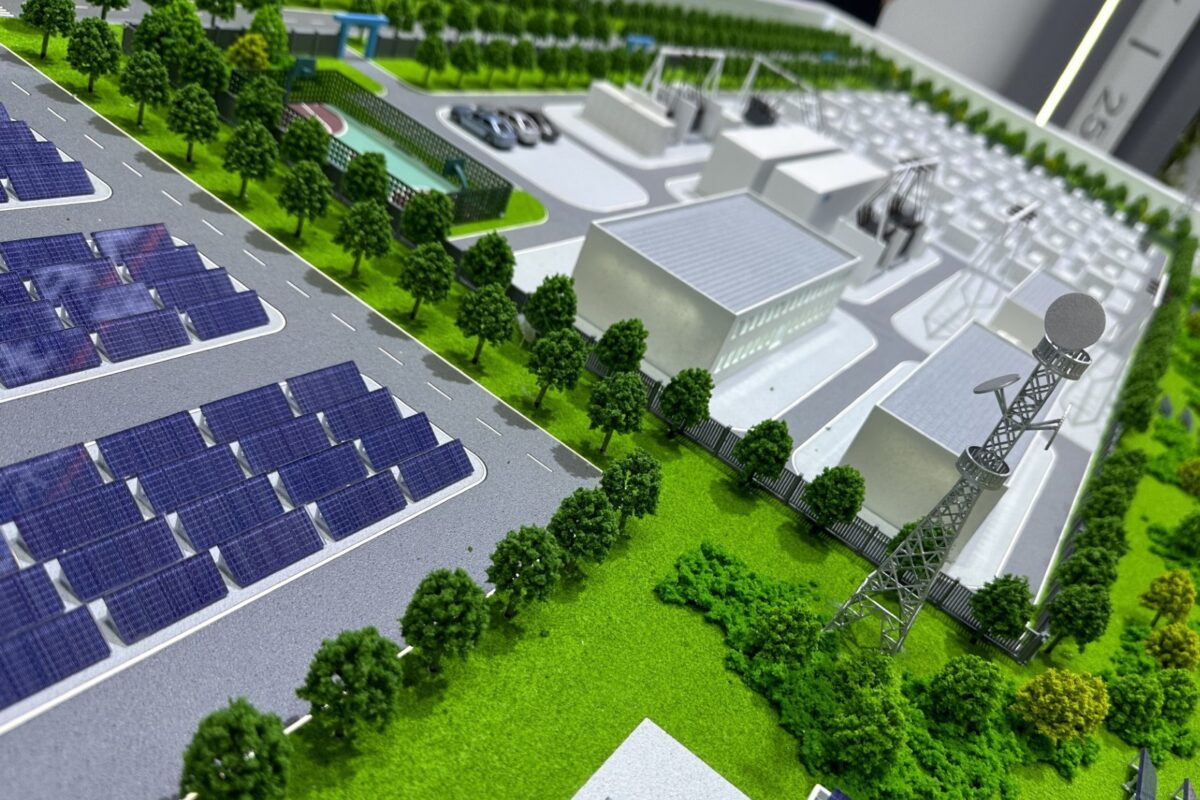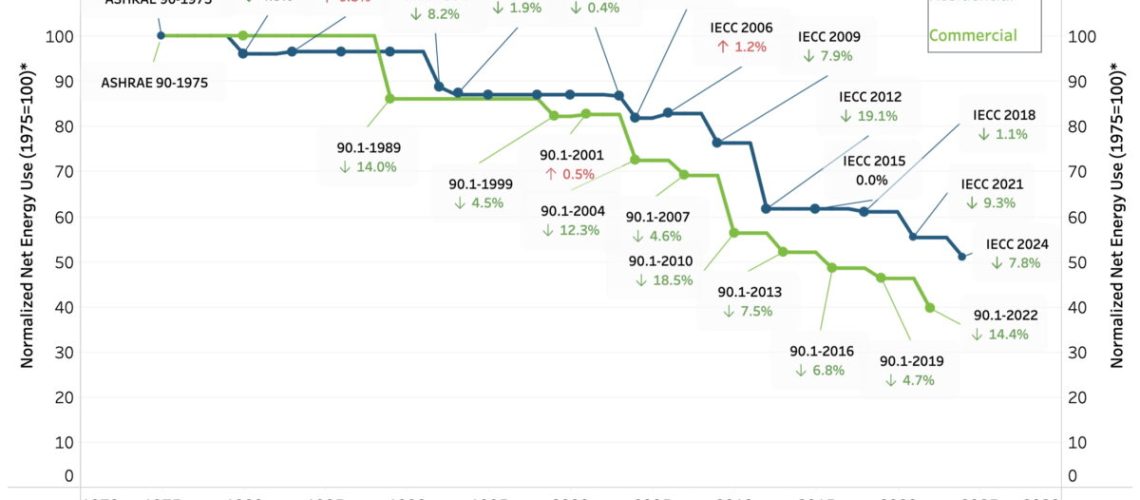A report highlights the increasing benefits of building energy efficiency codes, and maps the states that are adopting them. Building energy efficiency is a key element of a least-cost 100% renewables grid, the National Renewable Energy Laboratory has found.
Energy efficiency is “the first and best solution” to meet the growing need for electricity, said Paula Glover, president of the Alliance to Save Energy, at an event launching the “Sustainable energy in America 2025 factbook,” which was produced by the research firm BloombergNEF and the Business Council for Sustainable Energy.
The factbook reports state-level adoption of building energy codes for residential and commercial buildings, as tracked by the U.S. Department of Energy’s (DOE) Building Technologies Office. The DOE chart above shows that since 1975, energy codes have been strengthened to reflect the development of improved construction techniques, and new buildings built to the latest code would consume 50% to 60% less energy than those built in 1975.
The National Renewable Energy Laboratory has found in a study that energy efficiency is a good substitute for long-duration storage to help reach a least-cost 100% renewable energy grid, and that reducing building energy usage by about 60% is key to reaching that goal.
The factbook highlights two DOE datasets of state energy code adoption. The DOE map of state energy code adoption for residential buildings is below, showing in green, for example, states that have adopted the 2021 International Energy Conservation Code.
Next is DOE’s map of state energy code adoption for commercial buildings, with green in this case showing states that have adopted the 2019 ASHRAE Standard 90.1-2019.

Overall, energy efficiency is “delivering real financial benefits,” said Glover, pointing to a continued improvement in U.S. energy productivity. That metric is defined as the ratio of U.S. gross domestic product (GDP) to total U.S. primary energy consumption. U.S. GDP has grown 27.6% over the past 10 years, the factbook says, while primary energy consumption has decreased 1.3%, meaning that U.S. energy productivity has gone up 29.3% over the decade.
“Fortunately,” Glover added, “the policies that we’ve had in the Inflation Reduction Act and the Infrastructure Investment and Jobs Act have helped American families and businesses invest in efficiency, cut costs and reduce demand.”
As evidence of the “uptake” of those policies, she said that “in 2023 alone,” 2.3 million families claimed over $2 billion in credits for energy efficient upgrades such as heat pumps, insulation and high efficiency windows, with an average credit of $880 per household. “Middle income families are benefiting the most,” she said, “with nearly half of the recipients earning under $100,000 a year, and another 35% earning between $100,000 and $200,000 per year.”
The factbook also described building performance standards that improve the energy efficiency of existing buildings. Such standards have been adopted by four states—Washington, Oregon, Colorado and Maryland—and ten localities, as tracked by the National BPS Coalition.
The Business Council for Sustainable Energy has 66 corporate members in the energy efficiency, natural gas and renewable energy industries.
Popular content




